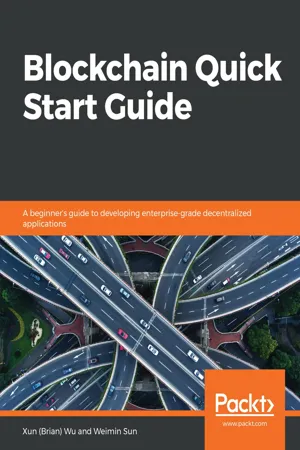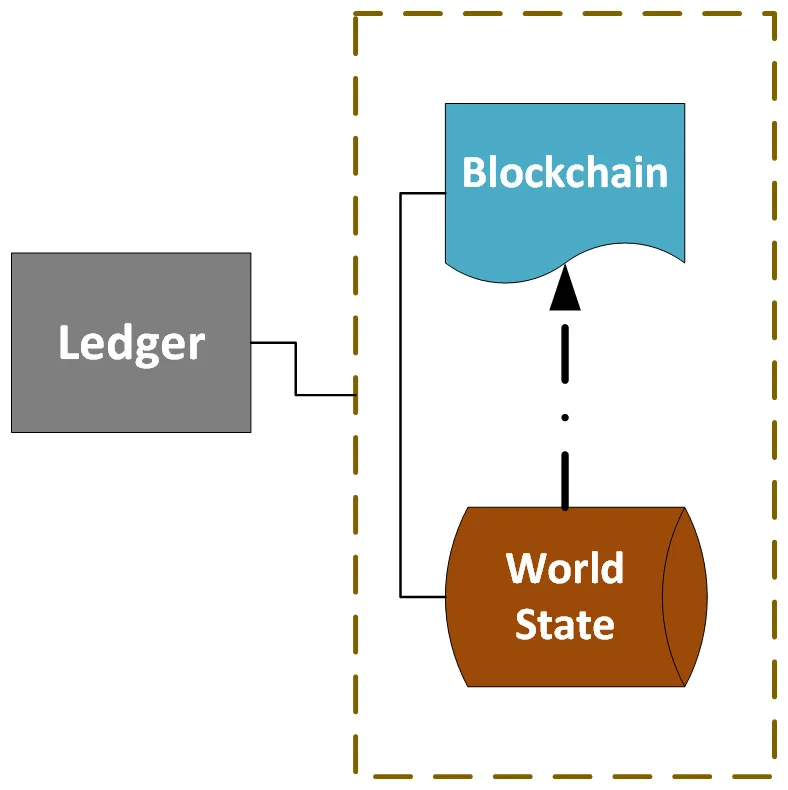
Blockchain Quick Start Guide
A beginner's guide to developing enterprise-grade decentralized applications
- 222 pages
- English
- ePUB (mobile friendly)
- Available on iOS & Android
Blockchain Quick Start Guide
A beginner's guide to developing enterprise-grade decentralized applications
About This Book
Learn quick and effective techniques to get up and running with building blockchain including Ethereum and Hyperledger Fabric.
Key Features
- Understand the key concepts of decentralized applications and consensus algorithms
- Learn key concepts of Ethereum and Solidity programming
- Practical guide to get started with build efficient Blockchain applications with Ethereum and Hyperledger
Book Description
Blockchain is a technology that powers the development of decentralized applications.This technology allows the construction of a network with no single control that enables participants to make contributions to and receive benefits from the network directly.
This book will give you a thorough overview of blockchain and explain how a blockchain works.You will begin by going through various blockchain consensus mechanisms and cryptographic hash functions. You will then learn the fundamentals of programming in Solidity – the defacto language for developing decentralize, applications in Ethereum. After that, you will set up an Ethereum development environment and develop, package, build, and test campaign-decentralized applications.The book also shows you how to set up Hyperledger composer tools, analyze business scenarios, design business models, and write a chain code. Finally, you will get a glimpse of how blockchain is actually used in different real-world domains.
By the end of this guide, you will be comfortable working with basic blockchain frameworks, and develop secure, decentralized applications in a hassle-free manner.
What you will learn
- Understand how blockchain hashing works
- Write and test a smart contract using Solidity
- Develop and test a decentralized application
- Build and test your application using Hyperledger Fabric
- Implement business network using Hyperledger Composer
- Test and interact with business network applications
Who this book is for
The book is for developers, analysts, or anyone looking to learn about Blockchain in a quick and easy manner.
Frequently asked questions
Information
Exploring an Enterprise Blockchain Application Using Hyperledger Fabric
| | Permissionless | Permissioned |
| Public | Everyone can read the transaction data. Everyone can validate a transaction in the block.
| Everyone can read the transaction data. Only predefined users can validate a transaction.
|
| Private | Only predefined users can read transaction data. Only predefined users can validate a transaction.
| Only predefined users can read transaction data. Only entitled users can validate a transaction.
|
- Key concepts in Hyperledger Fabric
- Core component model
- Setting up a Hyperledger Fabric environment
- Write a chaincode
- Configuring Hyperledger Fabric
Key concepts in Hyperledger Fabric
Ledger

Chaincode
Table of contents
- Title Page
- Copyright and Credits
- About Packt
- Contributors
- Preface
- Introduction to Blockchain Technology
- Ethereum Fundamentals
- Overview of Solidity Programming
- Building an Ethereum Blockchain Application
- Exploring an Enterprise Blockchain Application Using Hyperledger Fabric
- Implementing Business Networks Using Hyperledger Composer
- Blockchain Use Cases
- Other Books You May Enjoy